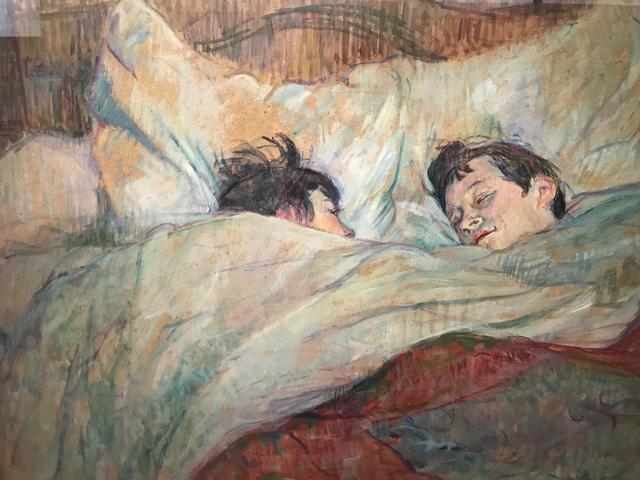Bed

The painting "Bed" by Henri de Toulouse-Lautrec is a captivating piece that delves into the provocative and intimate world of the bohemian lifestyle in late 19th century Paris. Toulouse-Lautrec, known for his bold and unapologetic portrayals of the nightlife in Montmartre, captures a moment of tender intimacy between two women in a bed. The scene is both alluring and scandalous, as it challenges societal norms and explores themes of love, desire, and human connection.
The composition of the painting is masterful, with the two figures entwined in a private moment of shared warmth and closeness. The use of color, particularly the orange whiteness that envelops the scene, adds a sense of intimacy and sensuality to the work. The positioning of the figures, with one leaning towards the other in a gesture of affection, creates a sense of intimacy that draws the viewer in and invites them to contemplate the complexities of human relationships.
Toulouse-Lautrec's choice to depict a homosexual couple in a bed was groundbreaking for its time, as it challenged the prevailing attitudes towards sexuality and gender roles. By portraying this scene with sensitivity and empathy, Toulouse-Lautrec humanizes his subjects and invites the viewer to consider the universal experiences of love and connection that transcend societal boundaries.
The painting "Bed" is a testament to Toulouse-Lautrec's skill as an artist and his ability to capture the essence of a moment with honesty and depth. Through his bold and unflinching portrayals of the bohemian lifestyle, Toulouse-Lautrec invites us to explore the complexities of human relationships and the beauty that can be found in moments of intimacy and connection. As a guide of Versailles for tourists, this painting offers a glimpse into a world that is both familiar and foreign, inviting us to reflect on the timeless themes of love, desire, and human connection that continue to resonate with audiences today.
© ChatGPT 3.5